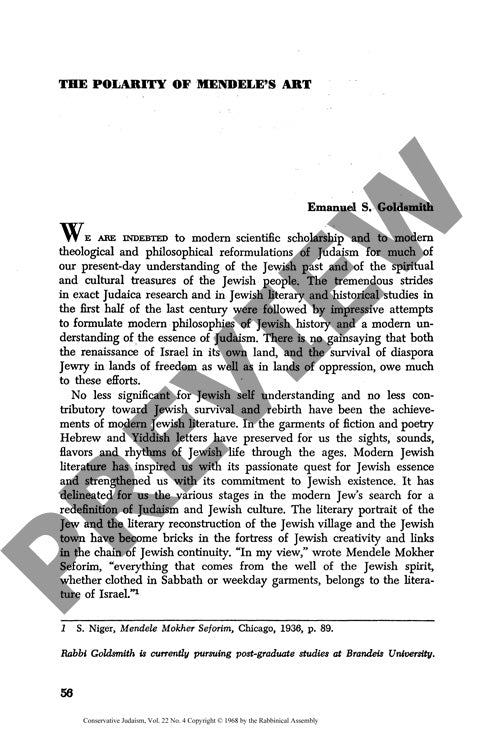The Polarity of Mendeles Art
Couldn't load pickup availability
Abstract This article examines the literary art of Mendele Mokher Seforim (Sholom Jacob Abramovitz, 1836-1917), the foundational figure of modern Hebrew and Yiddish literature. Through close textual analysis of Mendele's major works, this study identifies polarity as the defining characteristic of his artistic vision. The methodology involves examining the contradictory elements present in his themes, characterization, narrative structure, and linguistic choices. The research reveals that Mendele's art encompasses opposing forces: he functions simultaneously as artist and reformer, humorist and satirist, romantic and realist, critic and defender of Jewish life. This polarity manifests in his dual role as narrator-protagonist Mendele the bookseller and his creator Abramovitz, enabling both subjective empathy and objective evaluation of shtetl existence. The study traces this artistic duality to biographical experiences including childhood poverty, displacement, and professional struggles. Mendele's mastery of both Hebrew and Yiddish reflects his dual vision, as he recreated rather than translated his works between languages. His literary technique juxtaposes sacred textual traditions with mundane realities, creating a tragi-comic art form. The findings demonstrate that Mendele's polarity encompasses love and criticism of Jewish life, idealization and condemnation of poverty, and the tension between timeless Jewish essence and contemporary social problems. This internal contradiction enables his works to transcend simple ideological classification and achieve universal literary significance while remaining rooted in particular Jewish experience.

More Information
-
Physical Description
-
Publication Information
Published 1968
ISBN
-
Publication Credits
Emanuel Goldsmith

